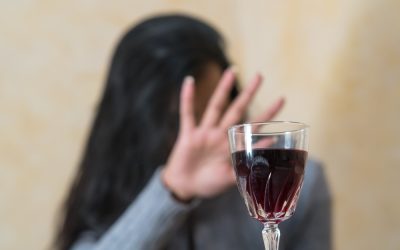A recent case study described a woman who was diagnosed with major depressive disorder and OUD, but later was identified as using opioids to self-medicate her underlying undiagnosed PTSD (67). Legislative efforts at the State level to close “pill mills” have had little discernable impact in reducing opioid use (35). Other recommendations to tighten control include protocols to ensure authenticity of the prescription source, adding additional abuse detection steps, and practices for returning unused drugs (36), as well as more physician education during residency training (37). While it is hopeful that policy interventions can reduce overdose and death, solutions to control illegal heroin coming into the country are less obvious and fall under the jurisdiction of the Drug Enforcement Agency (DEA). Interventions focusing only on prescription opioids are unlikely to be sufficient as long as heroin and other synthetic opioids such as fentanyl and carfentanil continue to flood the market. Illicit drugs are increasingly available through the “dark web” and are an important but less documented mechanism driving the opioid crisis.
The need for a new medical model: a challenge for biomedicine.

Indeed, it’s more than that; they have been instrumental in making the new BPSM compatible core theory reviewed in Part 1. The new post-dualist constructs of mind and body, further, accommodate crosstalk between neuroscience/psychology and biomedicine, in both directions. This is evident in the new fields of psychoneuroendocrinology (Fink, https://akross.ru/index.cgi?sec=akross;max_results=;st=70 Pfaff, & Levine, 2012) and psychoneuroimmunology (Moraes, Miranda, Loures, Mainieri, & Mármora, 2018), as well as in specific models such as of chronic stress and pain to be considered later. These interdisciplinary research programs, involving neuroscience, psychology, and biomedicine, were inconceivable in mind–body dualism.
- Given the spectrum nature of substance use problems, decision-making capacity is therefore neither completely present nor absent, but may be, at some times in certain contexts, weakened.
- Any student of Introductory Psychology knows the groundbreaking experiments performed by Albert Bandura, who examined the effects of modeling and imitation on childhood aggression (Bandura et al., 1961).
- Media portrayals, along with singer or music group autobiographies, that glamorize the drug lifestyle may increase its lure (Manning 2007; Oksanen 2012).
- In closed meetings, these factors are shared with others – not as an exercise in vulnerability – but to draw attention to the personal factors that contribute to addiction across individuals.
HYPOTHESIS AND THEORY article
- For Plato, true knowledge came from introspection and by intentionally shutting out what our senses may fool us to believe.
- Individuals involved in treatment could learn effective coping strategies, modify proximal environmental triggers, and achieve other social goals.
- Most all biomedical societies have adopted the nomenclature for drug addiction from the American Psychiatric Association, which uses the term “substance use disorder” (American Psychiatric Association, 2013).
- The attribution of causality can be used to blame the patient for his or her illness (“If only he had not smoked so much.…”), and also may have the power of suggestion and might actually worsen the patient’s condition (“Every time there is a fight, your dizziness worsens, don’t you see?”).
- As a mechanistic process, a metacontingency may provide explanatory value for understanding behavioral change, but it doesn’t differentiate between positive and negative outcomes.
In highlighting these problems, this study provides further evidence that the sorts of fallacious arguments in medicine noted by Binney (2019) are relatively widespread, consequential, and in need of remediation. Constructing a “gun violence disease” to promote medical intervention into society is therefore quite consistent with Engel’s vision. For here we see a concept of “disease” that, instead https://tnwest.org/venture-into-tennessees-wine-country/ of constraining scientific and political forms of authority, becomes a mechanism for their amplification. In the end, then, Engel’s arguments about the nature of disease and putative benefits of the BPSM seem uncompelling. They also, if accepted, would assign a potentially vast portion of human suffering to medicine, but without improving medicine’s ability to treat that suffering.
Finding Alternatives to Drug Cultures
Proponents of a ‘war on drugs’, for example, believe that laws and policies that are lenient towards substance use are linked with greater prevalence of use and criminal activity. In one study comparing cannabis use in San Francisco (where cannabis is criminalized) and Amsterdam (de facto decriminalization), there was no evidence to support claims that criminalization http://nomer-doma.ru/list.php?r=&c=&tr=&n=&view=full&ord=city&page=43 laws reduce use or that decriminalization increases use. In fact, San Francisco reported a higher cannabis use rate than Amsterdam (Reinarman, Cohen and Kaal 2004). Psycho-social systems are concrete entities or groups whose members act in relation to each other, such as families, religious organizations, and political parties (Bunge 2004).



